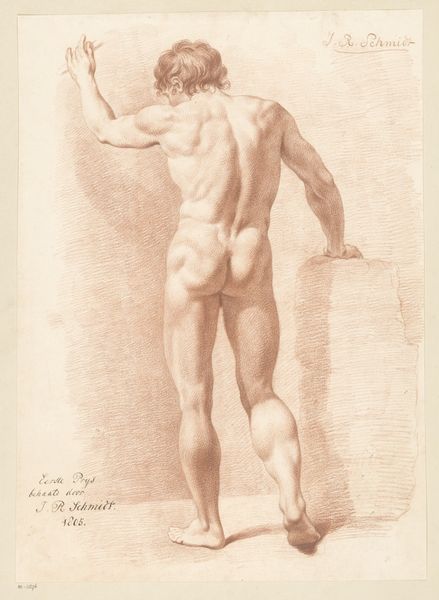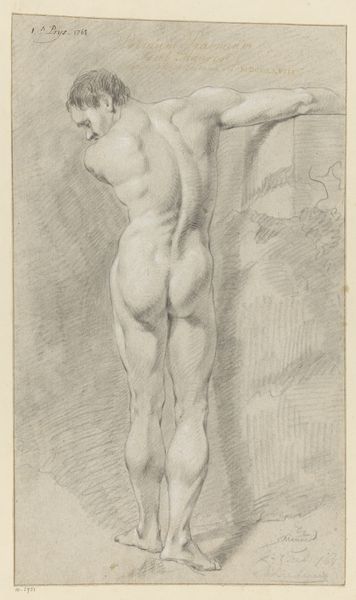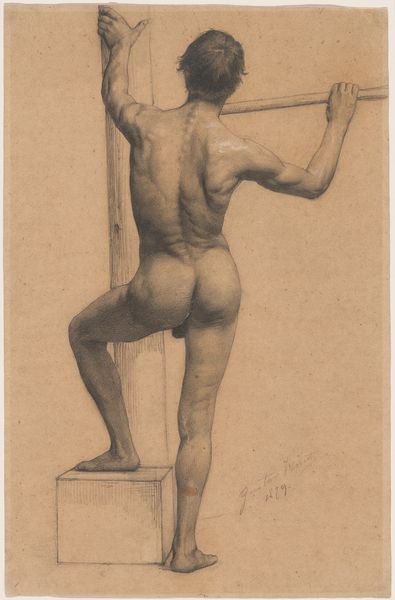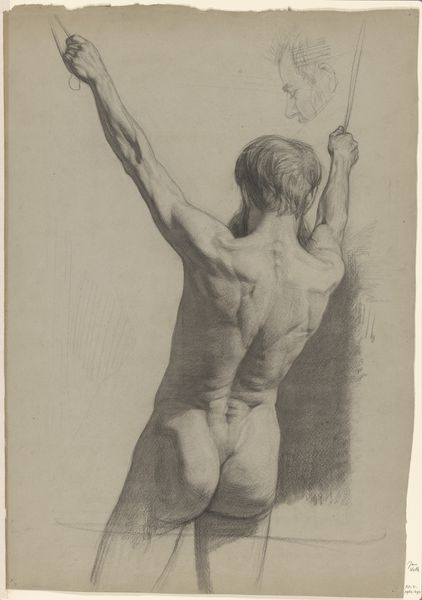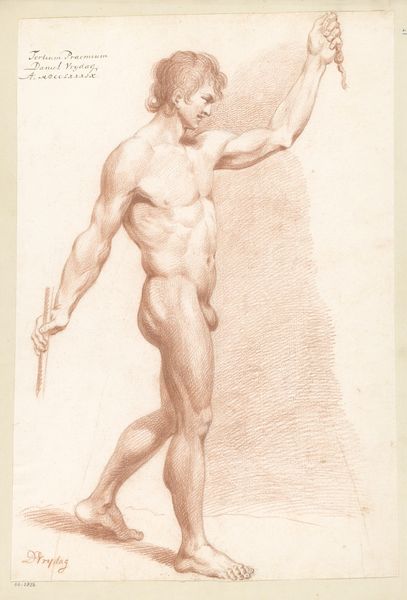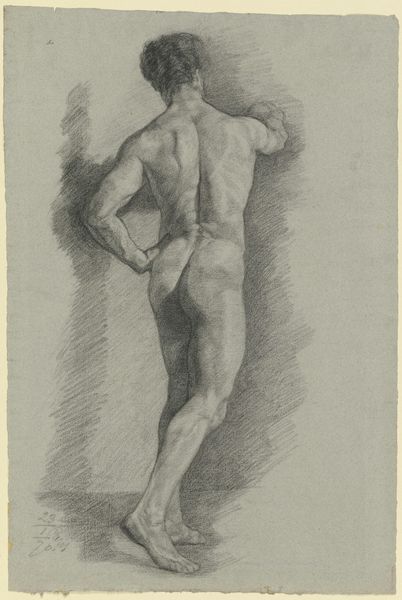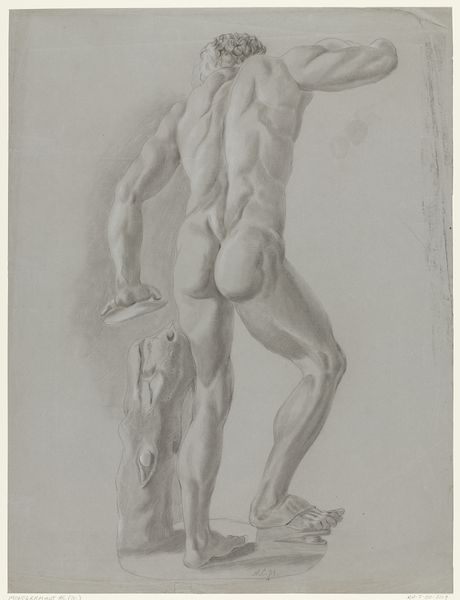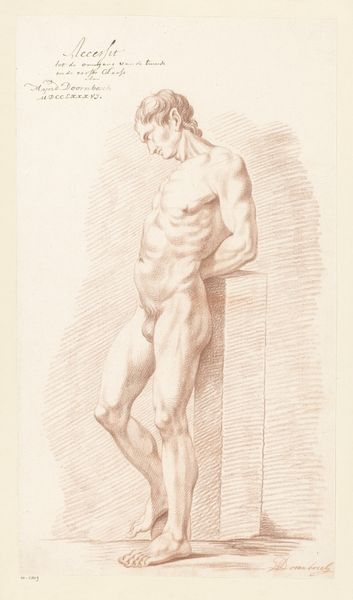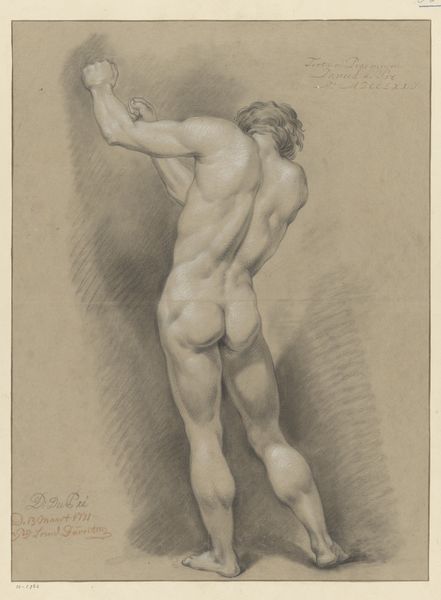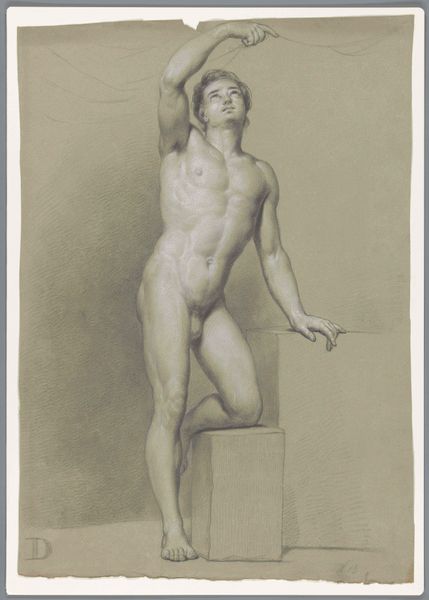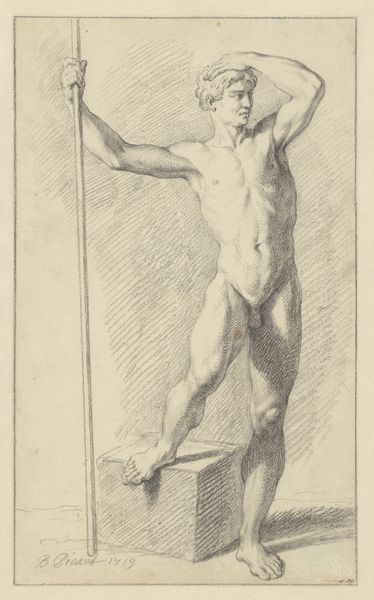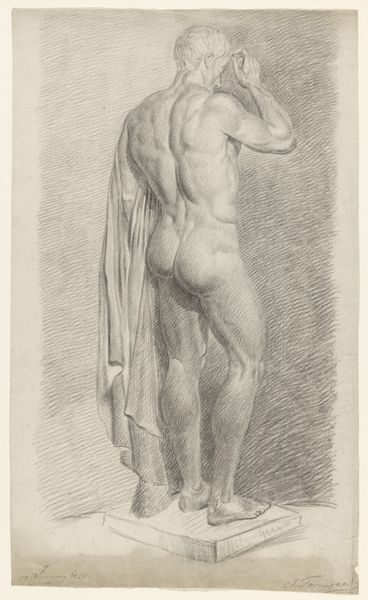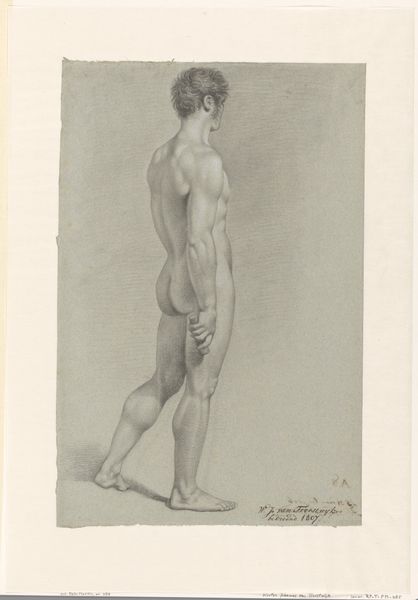
drawing, paper, graphite, charcoal
#
drawing
#
vienna-secession
#
impressionism
#
landscape
#
charcoal drawing
#
figuration
#
paper
#
pencil drawing
#
graphite
#
charcoal
#
nude
Dimensions: 425 × 267 mm
Copyright: Public Domain
Editor: This is Gustav Klimt’s “Male Nude,” created in 1880, using charcoal and graphite on paper. The figure, seen from behind with his hands clasped behind his head, has an almost statuesque feel to it. What can you tell me about the way Klimt presents the male body here? Curator: This drawing gives us insight into the academic training that formed the foundation for Klimt's later, more radical, work. Consider the social context: nudes, especially male nudes, in academic settings were often exercises in idealizing form, perpetuating certain power dynamics. The male nude, historically, was used to symbolize strength, virility, and even dominance. Editor: Right, but how does Klimt's depiction fit or disrupt that tradition? Curator: That’s key. Klimt is seemingly following classical conventions in terms of pose and anatomical study, yet, there’s a vulnerability in the figure. The clasped hands behind the head open up the torso, exposing rather than concealing. Is Klimt challenging traditional masculine ideals by presenting the model in a less overtly powerful stance? Consider too, the gaze. We are positioned to look *at* but also to ponder *with* this figure. How does the subtle rendering of light and shadow influence our reading of the subject's power or vulnerability? Editor: It definitely shifts the emphasis from pure muscularity to a kind of contemplative openness. I hadn’t thought about how the pose contributes to that feeling. Curator: Exactly. This drawing invites us to question how representations of the body contribute to, or challenge, prevailing social narratives. Editor: That's really fascinating. It’s made me think about the different ways male figures have been presented in art and how much they reflect societal expectations. Curator: Absolutely. By questioning these representations, we engage with broader dialogues about power, gender, and identity. It encourages a critical lens on visual culture.
Comments
No comments
Be the first to comment and join the conversation on the ultimate creative platform.
